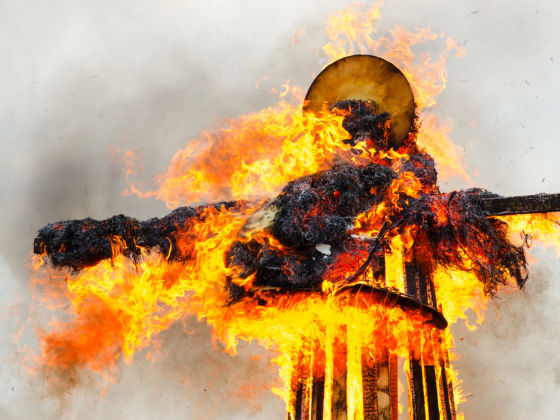I remember the first time I told a non-Santa Fean about Zozobra. The burning, the screaming, the white sheets, the chants. The torches and processions. The concept of cleansing. The flames.
They looked deeply uncomfortable and asked me if I was in a cult. I could almost see the thought-bubble in the air asking “…or the KKK?”
I laughed — and with a hint of a spark in my eyes, said, “No.” Yes, Zozobra is a strange and bizarre ritual. Maybe a little unsettling. But no, Zozobra is not an offshoot of the KKK, or a cult. It does not promote a hateful rhetoric. It’s merely a local tradition from my hometown where we gleefully come together once a year to burn a giant marionette. It’s like Burning Man, but in my opinion, better. And, it’s not harmful to anyone — except the marionette, and the bad luck of yesteryear.
